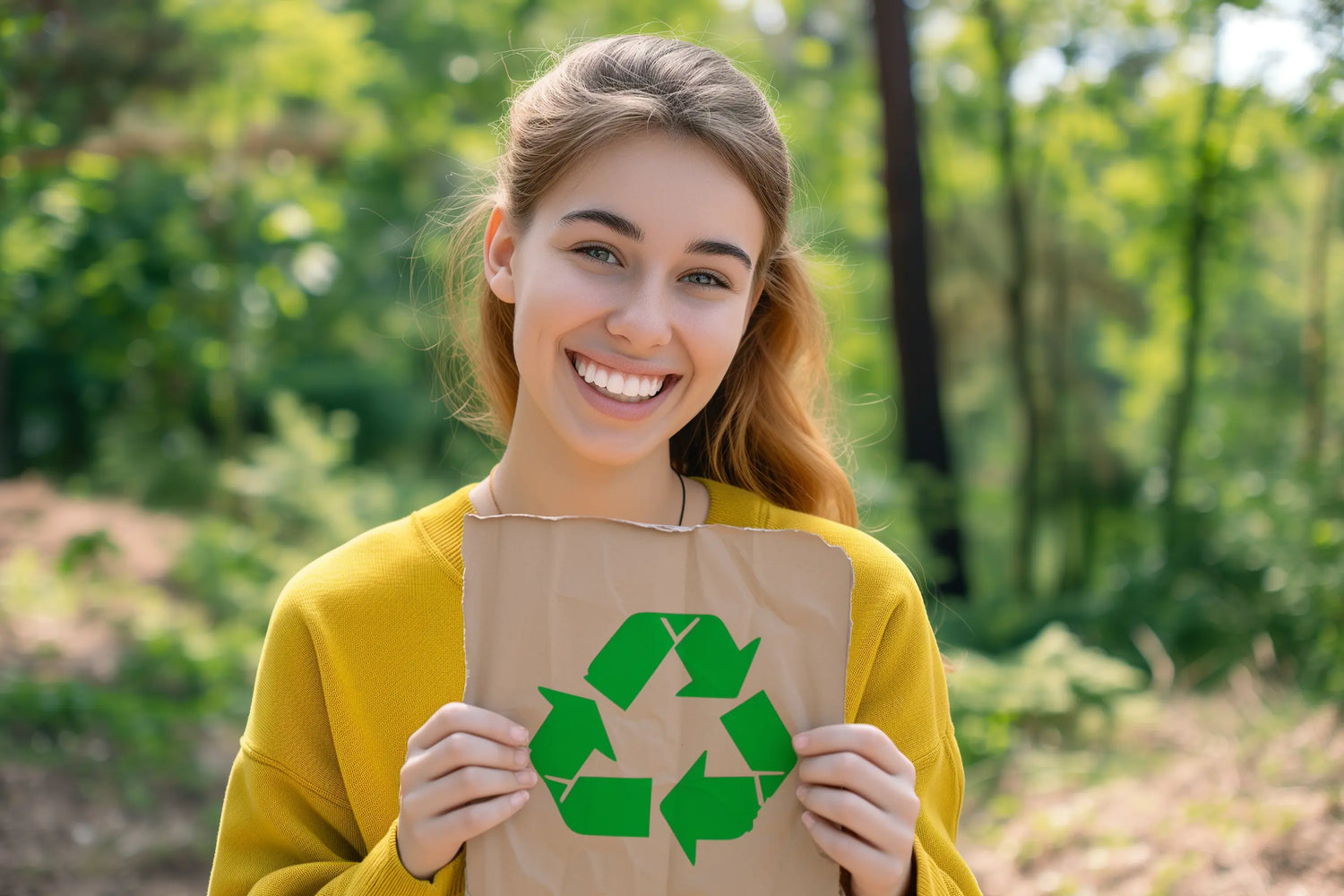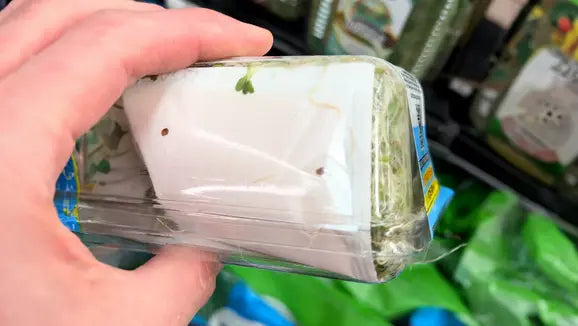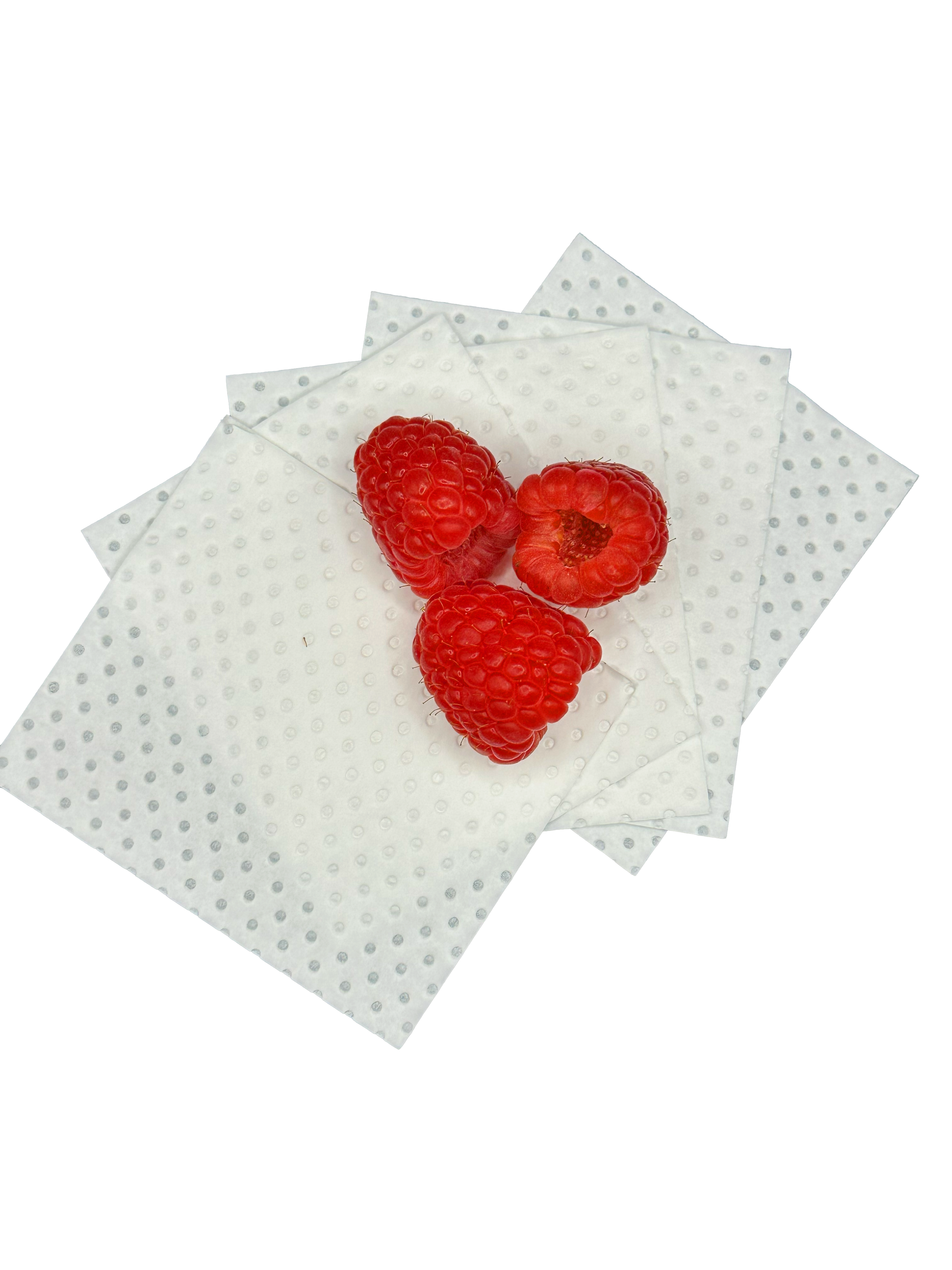We have great news on a new eco friendly moisture absorbent pad. In the quest for sustainability and love of the planet, the materials we use in our everyday products play a crucial role. One significant shift in the packaging and materials industry is the transition from traditional Polyethylene (PE) films to Polybutylene Adipate Terephthalate (PBAT) films. PBAT is making waves as a more eco-friendly alternative to PE, offering numerous environmental benefits without compromising on the functional qualities that make PE so popular.
Our new moisture absorbent pads feature the same absorption levels but have 100% eco friendly materials over previous PE film based pads. The products we all love and buy in supermarkets are often packaged for single use consumption so we have to make sure the waste is as easy to brake down or recycle as possible.
To highlight here are some of the key benefits of the PBAT material, its environmental advantages over PE and how it maintains the essential properties required for various applications.
Key Benefits of PBAT
1. Biodegradability: PBAT is a biodegradable polymer, meaning it can break down naturally in the environment. Unlike conventional plastics that persist for hundreds of years, PBAT decomposes into water, carbon dioxide, and biomass within a few months under composting conditions. This significantly reduces long-term pollution and waste management challenges.
2. Compostability: PBAT is certified for industrial composting. Products made from PBAT can be disposed of in composting facilities, where they will degrade completely without leaving harmful residues. This aligns with circular economy principles, ensuring that materials return to the environment safely and beneficially.
3. Renewable Resource Utilization: PBAT can be produced using renewable resources, decreasing reliance on fossil fuels. This reduces the carbon footprint of its production process, contributing to lower greenhouse gas emissions and promoting sustainable resource management.
4. Versatility and Functionality: Despite its eco-friendly nature, PBAT does not compromise on performance. It can be used in various applications, including packaging, agricultural films, and disposable products. PBAT films exhibit excellent flexibility, toughness, and processability, making them suitable for a wide range of uses.
Environmental Advantages Over PE Film
1. Reduced Environmental Persistence: PE films, while durable and versatile, are notorious for their persistence in the environment. They do not biodegrade, leading to significant pollution in landfills and oceans. In contrast, PBAT’s biodegradability ensures that it breaks down naturally, reducing the accumulation of plastic waste.
2. Lower Carbon Footprint: The production of PE films involves petrochemical processes that contribute to higher carbon emissions. PBAT production, especially when using renewable resources, has a lower carbon footprint. This shift helps in mitigating climate change and reducing the overall environmental impact of plastic production.
3. Enhanced Waste Management: PE films are recyclable, but the recycling rates are relatively low due to contamination and inefficient collection systems. PBAT’s compostability provides a more effective waste management solution, integrating seamlessly into composting facilities and reducing the burden on recycling systems.
Maintaining Essential Properties
A critical concern in transitioning to more sustainable materials is maintaining the functional qualities required for various applications. PBAT films excel in this area, particularly when it comes to moisture absorbency and other key properties.
1. Moisture Absorbency: PBAT films can be engineered to maintain moisture absorbent qualities, comparable to or even exceeding those of PE films. This makes them ideal for applications like food packaging, where moisture control is crucial for preserving product quality and shelf life.
2. Strength and Flexibility: PBAT films offer excellent mechanical properties, including high flexibility and tensile strength. This ensures that they can withstand the rigors of handling and usage, providing durability and reliability similar to PE films.
3. Processability: PBAT can be processed using conventional plastic manufacturing techniques, making it a practical and feasible option for industries looking to transition to more sustainable materials without significant changes to their existing processes.
The shift from PE to PBAT films represents a significant step forward in the journey towards sustainability. PBAT’s biodegradability, compostability, and lower carbon footprint offer substantial environmental benefits, addressing the urgent need to reduce plastic pollution and greenhouse gas emissions. Moreover, PBAT’s ability to maintain essential properties like moisture absorbency and mechanical strength ensures that it remains a functional and versatile choice for various applications.
As consumers and industries become increasingly conscious of their environmental impact, the adoption of eco-friendly materials like PBAT is likely to grow. By embracing PBAT films, we can contribute to a cleaner, healthier planet while continuing to enjoy the convenience and performance of modern plastic products.
We will transition all product variants over to the new Eco pad and hope you can communicate this change to your customers so they can eat with confidence of a greener future.





Leave a comment
This site is protected by hCaptcha and the hCaptcha Privacy Policy and Terms of Service apply.